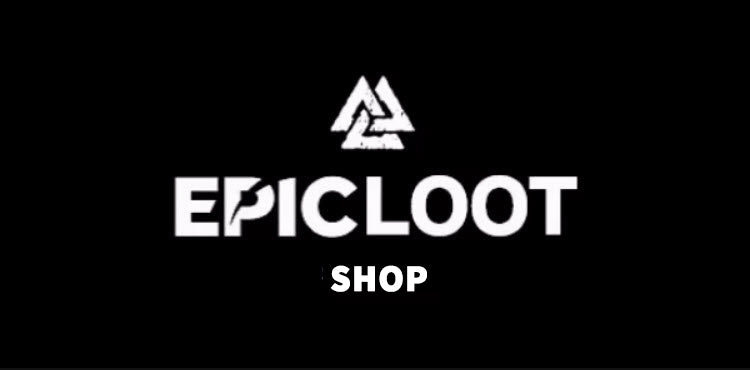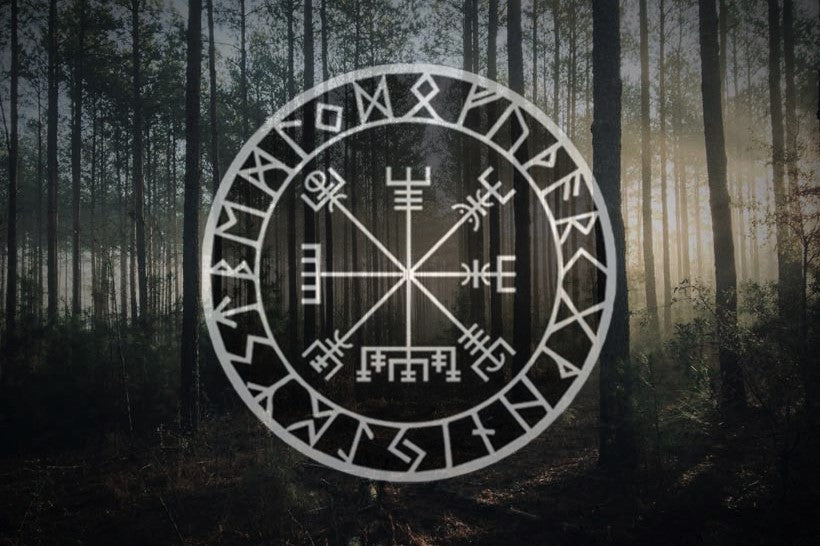What Does The Icelandic Vegvisir Symbolize?
If you've ever searched for the word "Vegvisir", you've probably seen a symbol that looks like an eye surrounded by eight staves. This may have made you curious as to what it stands for. Well, let me tell you. That symbol you saw is the vegvisir, or “sign post” in Icelandic. It is said to have been created over 1,000 years ago in order to help travelers safely get through treacherous terrain — which makes sense since Iceland (or at least a good chunk of it) is set amidst a bunch of rocks atop a moving tectonic plate.
Iceland, with its cool name (is it derived from Vikings?) and awesome landscapes (did you see Thor: The Dark World?), could be the subject of a movie. Well, at least it appears to be so in my imagination. But amongst my random musings of Iceland, I kept thinking about their cool symbol—the Vegvisir.
The Icelandic Vegvisir symbol is one of the most significant and recognizable symbols of Norse culture. It's more than just a decorative piece for hanging in your home — this is a symbol that holds deep meaning and history in every line and curve.
Vegvisir is an old Icelandic symbol based on the compass design. It is a magical symbol that was carved in wood and placed at the house entrance of people who wanted protection from the monsters (or giants). The Vegvisir will guide you toward the direction of the North and protect you from being lost.

What Does The Vegvisir, Icelandic Magic Protection Sign Says?
The Vegvisir, an Icelandic magic protection sign, has been the subject of great curiosity and debate since it was first seen in the 13th century. It is believed that the Vegvisir was carved in order to protect travelers from Iceland's treacherous landscape, but no one knows for sure what it says or what it means. The image on the Vegvisir is a combination of several different symbols that were used to represent the cardinal directions. A cross represents the east, a circle represents the west, a triangle represents the south, and a V-shaped symbol represents the north. Out of all these symbols, however, only the east symbol remains on the Vegvisir today. The other symbols have been replaced by runes that read "white", "good", and "gift".
The Vegvisir, or the "Runic Compass", is a symbol of Icelandic magic protection from the Middle Ages that features prominently in Icelandic folktales. It is thought to have been created by a runemaster around the year 1300. The purpose of the Vegvisir was to guide Vikings through treacherous waters and fog. In fact, it was originally supposed to work as an amulet that would protect one from losing their way; however, it was soon discovered that not only was the symbol an excellent navigational aid but also had other magical properties.
The Vikings believed that the Vegvisir had to be drawn on something in order to be effective, which is why early carvings were found on pieces of wood. However, these materials were not always available when needed most, so the Vikings quickly realized that it could also be carved into runes onto one's skin. This allowed them to carry it with them at all times and was especially useful for sailors who would otherwise have to hide the symbol if they ever went ashore for fear of being accused of paganism.
The Vegvisir, an Icelandic magic symbol, is believed to provide its owner with protection in all situations.
A vegvisir (Icelandic for "pointer" or "wayfinder") is an Icelandic magical symbol or rune that is said to point the way to a safe and happy voyage. The symbol itself consists of eight Viking rune staves arranged in a specific order to form a magical shape. It was traditionally carved on wooden staves and placed in ships and homes as a protective talisman, but it can also be drawn or painted on paper or wood.
The Vegvisir, which means "signpost" or "wayfinder," is a magical symbol used for protection. It was used by the Vikings to keep them safe on their journeys, and it's sometimes even referred to as the Viking compass. The Vegvisir is believed to have been used in Iceland as early as the 11th century and is supposed to be carved into doorways or windowsills to protect the inside from harmful magic.
The symbol itself is pretty simple: it consists of eight symmetrical sides that each have a dot in the middle, surrounded by eight more dots. The Vegvisir can be drawn in different ways; some variations include the addition of a cross in the center of the symbol, or with the dots having straight edges instead of curved ones. And while there are several theories about exactly how this symbol was used, many believe that it was drawn on sails to protect ships against harmful magic. Some even say that it was drawn on shields and other items to protect against physical danger as well!
What Does The Vegvisir Mean?
The Vegvisir is an Icelandic magical symbol that was carved as a charm to protect a person's home, family, and even livestock. In Icelandic, the word means "path-finder." The symbol looks like a stylized Viking ship and has been used on maps for centuries as a way to guide people safely to their destination.
The Vegvisir is a symbol of protection in Icelandic culture. The word translates as "The Wayfinder." The Vegvisir symbol is made up of several distinct components that each have their own meaning, and altogether they form a powerful sign.
The Vegvisir is an Icelandic symbol that was used by seafarers as a compass long before the invention of the magnetic compass. It is said to be able to guide one's path in difficult times, and it is still used today as a decorative symbol and in jewelry. Vegvisir, or "veg" for short, means "wayfinder" or "pathfinder." Its shape has been described as looking like an arrow or a shield, but to me, it looks almost like a stylized map with two branches on each side branching out from a central point, with four smaller points branching off of those two main points.
A Vegvisir, in Icelandic, is a magical symbol that was used by Vikings to find their way when they were lost at sea. It was believed to have been carved into a piece of wood or made from a stone, and it's thought that the shape could have been created by rubbing a thumb over the back of a comb. There's no real proof that it was used like this, but some experts believe that it may have had the same power as other ancient symbols. These symbols are known as "runes," which means "secret" or "whisper"—they were believed to hold secret powers.
In any case, the Vegvisir's shape is really interesting: first of all, it has eight points, which represent the eight directions—north, south, east, west, up, and down. The symbol also seems to suggest an arrow pointing toward where the north is. There's even some evidence to suggest that the shape might be in the form of Thor's Hammer—another Viking symbol that represents protection and power.
How To Use A Vegvisir The Old Icelandic Way
The Vegvisir, or the Viking Compass, is an old Icelandic Runic compass that was used by Icelandic Vikings to navigate the seas. The Vegvisir can be traced back to the 10th century and was last used in the 18th century before it was banned by the Catholic Church in Iceland. But today, you can still buy and use a modern Vegvisir, as long as you know how to use it.
The Vegvisir is a type of Runic compass that uses a series of symbols (runes) to help guide travelers. The most notable feature of the Vegvisir is that it's comprised of eight Viking rune staves while a traditional compass has only four (North, South, East, and West). This particular compass is designed to help Icelanders find their way home which could have proven useful for those Vikings who were lost at sea.
Vikings were known to use the sun and stars for navigation but since they had no compasses, they often relied on these rune staves to help them find their way instead. The staves are placed on top of one another so that each represents an angle in the cardinal directions: North, South, East, and West.
The Vegvisir is an Icelandic compass that has been used for hundreds of years. It's a simple design and can be drawn on anything, but when it is charged with the energy of your intent it works much better than any modern compass you could buy at the store.
The Vegvisir is made up of eight symbols: four blue and four red. The blue symbols are straightforward: there's a single arrow that represents the direction north, and two parallel arrows, which stand for east and west. The red symbols are a little more complex: there's one that looks like two birds sitting back to back in a circle, representing south; another that looks like the letter M, standing for man or woman (and thus, human direction); and three more that look like "V"s standing on their points, which represent above, below, and besides you.
The Vegvisir is a symbol outlining principles that were used to guide the people of Iceland during their travels. It can be found inscribed on ancient pillars, used to decorate old homes, and is more widely used in popular culture today. The symbol can be representative of complex directions, simplifying one's journey, or even a belief in the world around us.
The Vegvisir, which translates to “sign post” in Icelandic, is a symbol from ancient Norse tradition. It was essentially used as a navigation system for sailors to help them find their way through rough waters to and from Iceland. The symbol itself is quite complex, with several different layers of meaning, but it was formed with the intent of helping people get safely home after many days at sea...and it still does that today.
Vegvisir's meaning is complex and multi-layered. It can be viewed as a defense mechanism for Icelandic people against the powers of nature, an Icelandic identity symbol, or an eye against negative forces. The reason for this is that the vegvisir is a creation of the old Viking society, and those ancient peoples believed in many Gods and mystical forces that held powers beyond understanding.






Leave a comment